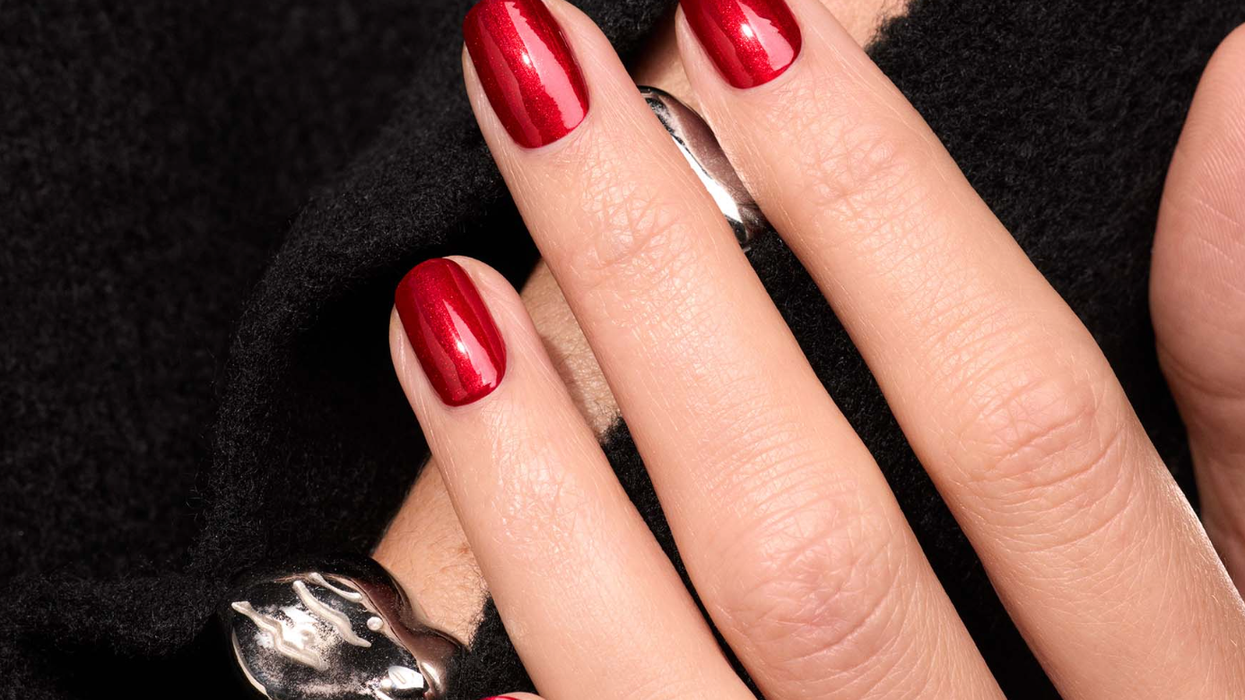Confidence is key to a successful career!
How To Be More Confident At Work, Using Your Myers-Briggs Personality Type

John Hackston is a chartered psychologist and Head of Thought Leadership at The Myers-Briggs Company where he leads the company’s Oxford-based research team. He is a frequent commentator on the effects of personality type on work and life, and has authored numerous studies, published papers in peer-reviewed journals, presented at conferences for organizations such as The British Association for Psychological Type, and has written on various type-related subjects in top outlets such as Harvard Business Review.
Communicating at work can be hard! Sometimes, it might seem as if your boss is speaking a different language and seeing life from some weird and incomprehensible angle. And in a way, that could be true. It’s just that rather than coming from an extraterrestrial culture, they may just have different personality preferences, and even a different personality type altogether. But all is not lost for your job. Here are some tips for first recognizing some aspects of your boss’s personality and then using this knowledge to speak their language, based on the Myers-Briggs Type Indicator (MBTI) personality framework. As you better learn to navigate different personality and communication styles among your co-workers and higher-ups, you'll quickly learn how to be more confident at work — communicating your own needs, setting strong boundaries, and working more seamlessly toward the same unifying goals.
What is the MBTI?
 Photo by olia danilevich / PEXELS
Photo by olia danilevich / PEXELSThe MBTI looks at four aspects of our personality:
- Extraversion-Introversion: Where people prefer to take and direct their energy.
- Sensing-Intuition: How people take in information.
- Thinking-Feeling: Which way decisions are made.
- Judging-Perceiving: Whether people prefer to live in a more planned and structured way or a more spontaneous way.
In each pair we will prefer one approach more than the other. Use the descriptions below to understand what your preferences are, and those of your boss, so you can have a more harmonious work life.
How To Be More Confident At Work Whether You're An Extrovert Or Introvert

Photo by Alexander Suhorucov / PEXELS
Picture this: a coworker sends you a quick question over slack that you don't have the answer to. You know that your boss would have this info easily, but they're in a power hour. Should you drop by their desk, send them a slack message of your own, or hold off altogether? Knowing how your boss may respond in this situation can help you create a more lasting and meaningful work relationship over time, and it all could boils down to whether or not they have a personality preference for Extraversion or Introversion. But how do you know which you both have a preference for? And how can you communicate if they're different? Let's break it down.
You or boss may have a personality preference for Extraversion if:
- Gets energized by interacting with people and the outside world in general and enjoys or seems to enjoy the buzz of a busy workplace.
- Becomes bored and de-energized by spending quiet time on your own or their own.
- Likes to talk things through, often without thinking them through first, and wants to take action quickly.
On the flip side, one of you may have a personality preference for Introversion if:
- Become worn out by interacting with people and the outside world in general, wanting a break from people and a busy workplace to recharge your or their batteries.
- Enjoys and gains energy from spending quiet time on your own or their own.
- Prefers to think things through before saying anything or taking action.
If both you and your boss have the same preference, it’s likely that you’ll communicate well. But we've got some suggestions for you if they don't exactly match up, too!
If you have an Extraversion preference and your boss has an Introversion preference:
- If you ask them a question wait for an answer. Maybe count to ten to yourself before you say anything. If they don’t answer straight away, it doesn’t mean that they are keeping something from you or didn’t understand your question. They might be thinking through exactly what to say.
- Don’t interrupt or talk over them. If they pause for a moment, they haven’t necessarily finished speaking! Don’t feel that you have to fill every silence; let them think.
- In meetings, and especially in online meetings, make space for them to say their piece.
If you have an Introversion preference and they have an Extraversion preference:
- Be prepared for them to do a lot of the talking but be ready to jump in when you have a chance.
- Work out strategies for contributing to meetings. This could include, for example, making sure that you are the first to contribute, or being prepared to say, "Let me get back to you on that."
- Share your views verbally with them. Maybe write things down first if you want to be sure to get things right – but relying on email or other written communication may not have impact.
Sensing Vs. Intuition At Work

Photo by Yan Krukau / PEXELS
Let's dig deeper into the scenario above. Assume you've decided the way you're going to ask your boss the question — next, you've got to decide how you want to frame the question. Does your boss love a lot of details, giving them the ins-and-outs of the context to the fullest extent? Or does your boss want you to cut to the chase a little more and give them everything on a brief, need-to-know basis? These could intimate that your boss has a personality preference for Sensing or Intuition.
You or your boss may have a personality preference for Sensing if:
- Focus on the present and rely on and trust your own or their own experience and the evidence of the senses.
- Want to know the facts, not the theory.
- Take a realistic approach.
However, you or your boss may have a personality preference for Intuition if:
- Anticipate the future and are more interested in how things connect and fit into the bigger picture.
- Want to know and understand the theory, the ideas, the framework behind any facts.
- Take an imaginative approach.
If you prefer Sensing and your boss has a preference for Intuition:
- Cut out the details when you’re describing a project, plan or strategy. Intuitives can get bored by detail and will stop taking in information. They’ll take away a clearer picture of what you are trying to say if you keep things high level.
- Don’t be offended or feel put down if they seem to change the subject mid-way through a conversation. The connection they’ve made might seem entirely reasonable and logical to them.
- They might come up with suggestions that seem ridiculous at first but don’t dismiss this - there might be a good idea in there to build on!
If you prefer Intuition and your boss has a preference for Sensing:
- The first time you meet, try not to show off how clever you can be. Yes, there’s a chance that your boss might be impressed, but they might think you’re not as impressive as you think you’re being.
- You might suddenly think of a really novel idea for a project. Stop and think this through before sharing this with your boss. They will need to be convinced, with details and data, that this will actually work.
- Stick to the facts when communicating. Talk about practical outcomes and the evidence of past experience, not how your ideas fit into a theoretical framework.
Thinking Vs. Feeling At Work

Photo by Canva Studio / PEXELS
While how and when you deliver a message, question, or otherwise to your boss is important, you also want to understand how they like to handle situations. Is your boss the kind of person who revels in questions at work, jumping into teamwork mode to problem-solve together? Or do they want you to propose a solution alongside your question to quicken the pace and better exhibit your on-the-job knowledge? Neither are necessarily the wrong, and it doesn't have to be one or the other, but those two types could indicate that your boss has a personality preference for Thinking or Feeling.
You or your boss may have a personality preference for Thinking if:
- Think that it’s important to make a logically correct decision, where everyone is treated the same, even if this means some people may be upset or disadvantaged.
- Focus on and talk more about the tasks that need to be done at work rather than the people.
- Find that your or their first impulse is to criticize (even if it is constructive criticism) rather than to offer praise.
However, you or your boss may have a personality preference for Feeling if:
- Feel that it’s most important to make a decision that works for everyone involved, and fits with what feels right or with your or their values, even if it’s not the objectively most logical decision.
- Focus on and talk more about people and their relationships than on the jobs that need to be done.
- Tend to offer praise and find it difficult to criticize – even constructively.
If you prefer Thinking and your boss has a preference for Feeling:
- Don’t question their competence or wonder if they have an ulterior motive when they give you praise before a task is finished. They will genuinely appreciate the effort you are putting in, even if there are no results yet.
- When they ask you how you are doing, how your family is, don’t worry; they are probably genuinely interested. And why not ask them too; they will likely appreciate it.
- If you want to influence or persuade them, show them how your suggestion chimes with their values, is the best one for the people involved, and feels right.
If you have a preference for Feeling and your boss prefers Thinking:
- Don’t worry if they don’t give you any feedback, praise or criticism while you are working on a task. A Thinking boss will typically wait until the task is finished.
- Don’t be offended if they get straight down to business without breaking the ice first. They are likely quite task-focused. But if they want to open up, that’s fine!
- If you want to influence or persuade them, show them why your suggestion is the logical, objectively correct one.
Judging Vs. Perceiving At Work

Photo by RF._.studio / PEXELS
Now that you've asked your boss the question, you'll want to consider how to follow up later. Does your boss want clear documentation for how you solved the problem, who the stakeholders were, what happened afterwards, and if there's any more work that needs to be done on the project? Or does your boss prefer that you take whatever information and solutions the two of you crafted and handle the situation on your own, only updating if you need anything else? These two options could mean that your boss has a personality preference for Judging or Perceiving.
You or your boss may have a personality preference for Judging if:
- Likes things structured, scheduled and organized, making plans that may include timelines or target dates.
- Gets a real buzz from getting tasks completed as soon as possible.
- Likes to come to closure.
However, you or your boss may have a personality preference for Perceiving if:
- Prefer to go with the flow and don’t like to be tied down to a schedule or structured plans.
- Gets a buzz from doing things at the last minute and don’t get round to finishing them early.
- Likes to keep options open as long as possible.
If you prefer Judging and your boss has a preference for Perceiving:
- Be aware that they might come up with last-minute suggestions or changes of plan. Control for this by specifying when you need a decision if the job is going to get done. You’ll likely need evidence to back this up.
- Don’t be tempted to dismiss those last-minute ideas though – keeping options open as long as possible can pay dividends.
- Don’t be alarmed if your boss emails or DMs you out of work hours. It likely isn’t urgent.
If you have a preference for Perceiving and your boss has a preference for Judging:
- If you want to change plans, make sure that you can give very solid reasons for doing so, especially if your boss would see this as last-minute.
- Demonstrate to them that you can deliver results even if you don’t start a project straight away – they will be less likely to micromanage you.
- Talk through how a more flexible working arrangement should mean that you can be more productive.
I hope this confidence-boosting framework helps set you up for success in your 9 to 5 — and at the team happy hour! 😌
Looking for more work advice? Be sure to sign up for our weekly email newsletter!
Header image via Yan Krukau / PEXELS











